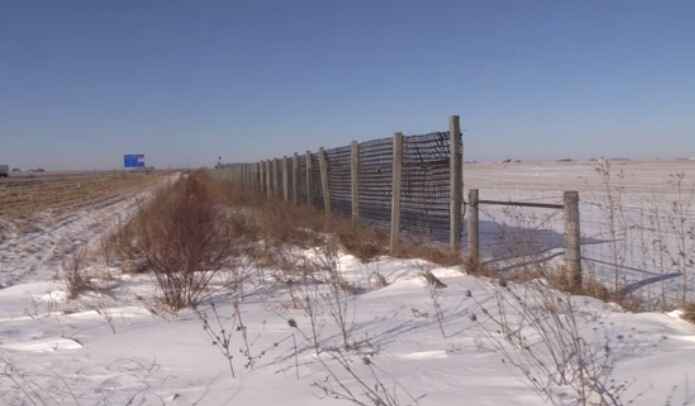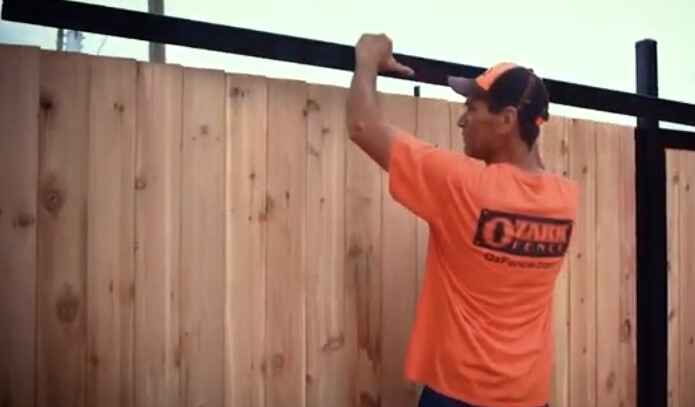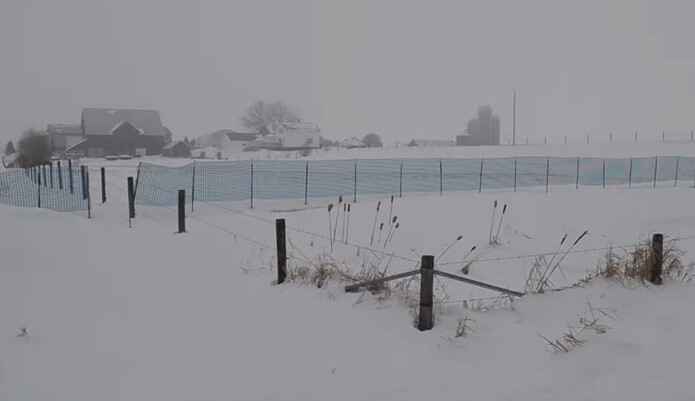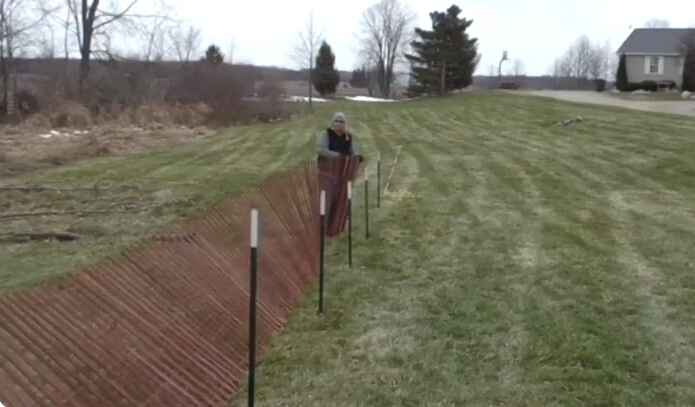Yes, a fence can be installed in the winter. However, it's essential to consider factors like frozen ground and weather conditions. Consult with a professional installer to ensure proper installation during colder months.
Embracing the winter chill doesn't mean putting a pause on your DIY dreams! As a fervent DIY enthusiast, I know the thrill of taking on projects year-round. Wondering if a fence can be installed in the winter? Join me on this frosty adventure as we debunk myths, share practical tips, and discover why winter might just be the perfect season to tackle that fence project. Let's turn the cold into an opportunity and fence our way through the winter wonderland!

Yes, a fence can be installed in the winter; however, there are some important things to consider. Cold temperatures can make working with materials like wood and metal hard and slow down the process if special precautions aren't taken. If you decide to install a fence during winter, ensure all nails, screws, bolts, and other hardware are pre-drilled or treated to avoid any corrosion or weathering due to snow and ice. In addition, use caution when using any power tools, as the frozen ground could cause instability when digging postholes.
What time of year is best to put up a fence?

The best time to put up a fence is any time of year, but winter provides several advantages.
First and foremost, it is typically easier to find the materials you need in winter as stores generally have plenty in stock, and it's often cheaper due to seasonal discounts or price drops.
Furthermore, if you plan on doing the job yourself or hiring a professional contractor, they may be less busy in the winter, so you'll likely get your project done quicker.
Lastly, since most people don't tend to make much home improvement during this time of year - especially exterior work like fencing - there will be fewer distractions, such as competing contractors working at nearby homes.
Overall, constructing a fence during winter has advantages for homeowners who want their projects completed quickly and cost-effectively.
Is it more expensive to install a fence in the winter?

Installing a fence in the winter has pros and cons compared to installing one in other seasons. In terms of cost, it does not generally have to be more expensive than installing at different times of the year; however, some considerations can make your installation less cost effective.
Factors to consider before installing a fence in winter
Installing a fence in winter can be challenging. Here are some key factors to consider before taking on this project:
A. Ground Conditions
Sub-freezing temperatures can make the ground hard and more difficult to dig. Use a powerful drill or rent an auger instead of manual digging with shovels to ensure a successful installation. Check soil moisture too; if it's frozen solid, wait until the ground thaws before starting.
B. Weather Conditions
Cold temperatures and harsh weather can make installation more difficult. Be prepared for snow, ice, slush that may get in the way of setting posts or panels, and wind that can make it challenging to keep the posts in place.
C. Availability of Materials and Labor
Winter might not be the best time to purchase materials or hire a contractor, as many suppliers and contractors may be closed or booked up during this time. Please research to ensure that everything you need is available when you need it. Also, plan for longer installation times due to harsh weather conditions.
Considering all these factors before beginning the project, you can be sure that your fence will be installed correctly and last for years to come.
Advantages of installing a fence in winter
Winter is an ideal time to install a fence. Here are seven advantages of installing a fence during the winter months:
1. Cost-Effective
Wintertime can be a great opportunity to save money on fence installation with access to discounts, as labor and material costs tend to be lower during the colder months. Additionally, many contractors will offer off-season specials to attract business during slower periods.
2. Improved Durability
Installing a fence in winter can significantly reduce the risk that your new fence will experience warping, splitting, and cracking due to summer heat. The cold weather helps keep wood materials from shrinking or expanding with seasonal temperatures. This means you'll likely get a long-lasting installation with better structural integrity.
3. Increased Visibility
Fences installed in winter can be easier to see, making them safer for children and pets playing in the yard. The contrast of a dark fence against snow or lighter-colored Landscaping can help increase its visible profile, which can be especially important if you have a pool in your backyard.
4. Reduced Environmental Impact
Installing a fence in winter can reduce its environmental impact due to less disruption of the land and soil. This is because the ground is frozen, and there's less need for digging or moving plants, trees, and shrubs out of the way to make room for your new fence.
5. Shorter Installation Time
Since the ground is already frozen, there's less need for contractors to prepare the soil before installing a fence in winter. This means installation can occur more quickly compared to warmer months and avoid delays due to weather conditions or other obstacles.
6. Easier Landscaping
Installing a fence in winter can be easier for Landscaping since the ground is frozen. This means contractors can move trees, shrubs, and rocks with minimal disruption or damage to existing landscaping elements.
7. Seasonal Aesthetics
Fences installed in winter can offer a unique aesthetic benefit to homeowners who want their outdoor space to look festive. The contrast of a dark fence against white snow or light-colored Landscaping can add to the winter wonderland in your backyard.
Disadvantages of installing a fence in winter
Installing a fence in winter can present several difficulties. Below are three key disadvantages to consider before beginning your project:
A. Cold weather can slow down the installation process
- Winter temperatures can make working with certain materials, such as plastics, challenging.
- Working outside for long periods can quickly lead to exhaustion and cold-related illnesses.
- If the temperature drops too low, you might not be able to install the fence at all.
B. Ground may be frozen and difficult to dig into
- Digging postholes in the frozen ground can take much longer than in warm weather.
- The posts may not fit securely into the holes, risking the integrity of your fence.
- Heating tools and materials might be necessary for a successful installation.
C. Weather conditions can cause delays or damage to materials
- Rain, snow, and wind can interfere with installation progress or damage materials altogether.
- Sealing may be required more frequently in a wet climate.
- If temperatures drop too low, completing the job might even become impossible.
Installing a fence in winter is not impossible, but you should know the potential risks beforehand. With careful preparation and extra effort, you can still have your fence installed as planned.
Preparing for a winter fence installation: A Step by Step Guide

Preparing for a winter fence installation doesn't have to be complicated. By following these simple steps, you can ensure a smooth process and a successful result.
Step 1: Measure the Area
Make sure to measure the area for your fence twice to ensure accuracy. Consider any obstacles like trees and buildings that could get in the way.
Step 2: Choose Your Fencing Materials
Pick a fencing material that meets your privacy, aesthetic, and budget needs. Research the durability of each material to ensure it can handle winter elements.
Step 3: Prepare the Ground
Clear any weeds and debris from the fencing area, then level and compact the ground. Make sure to follow local regulations for any required foundation depths.
Step 4: Layout Your Fence
Place wooden stakes at each corner of your fence perimeter and use string or twine to mark off the area your fence will cover. Double-check measurements before continuing.
Step 5: Dig Post Holes
Dig postholes every 8 feet along your fence perimeter according to the style of fence you chose. Make sure to follow local regulations for any required hole depths and widths.
Step 6: Secure your fence posts.
Place each post into its respective hole, then fill the hole with concrete or gravel and tamp it down firmly. Use a level to be sure the posts are completely vertical before allowing the foundation to dry.
Step 7: Attach Fence Panels
Attach panels of your chosen material to each post using metal brackets or screws according to manufacturer instructions. If necessary, use a saw to cut panels to size based on measurements taken in Step 1. Enjoy your winter fence installation!
5 Tips for Installing a Fence in the Winter
Winter can be challenging to complete an outdoor project, like installing a fence, but with the proper preparation and tools, it doesn't have to be. Here are some tips for making your winter fence installation successful:
1. Prepare Your Materials
Cold weather can make materials brittle, so make sure that you warm up wood and metal materials before using them. Store the material in a covered garage or shed until you're ready to install it.
2. Keep Yourself Warm & Dry
Wear layers of waterproof clothing, sturdy boots, and gloves to keep yourself dry and warm while working outside. Prepare hot drinks or bring snacks to stay energized on colder days.
3. Check the Weather Conditions
Look up the weather forecast before starting and plan to avoid snow or freezing rain. Schedule your fence installation on a dry, sunny day whenever possible.
4. Check for Ground Frost
The ground should be frost-free down several inches to install post holes safely. If the ground is frozen, wait until it thaws out before continuing work.
5. Protect Components from Moisture
Apply waterproofing sealant or varnish to wood posts and rails exposed to moisture. This will help protect them from rot during winter storms and blizzards.
Final Words
Though it may seem counterintuitive, installing a winter fence can be advantageous. By taking care of the project during cold weather, you can avoid the wait times and scheduling conflicts that often come with peak fence-building season. You'll also have a better chance of getting discounts on materials and labor costs. So if you're considering putting up a new fence, don't wait for spring—get started today!